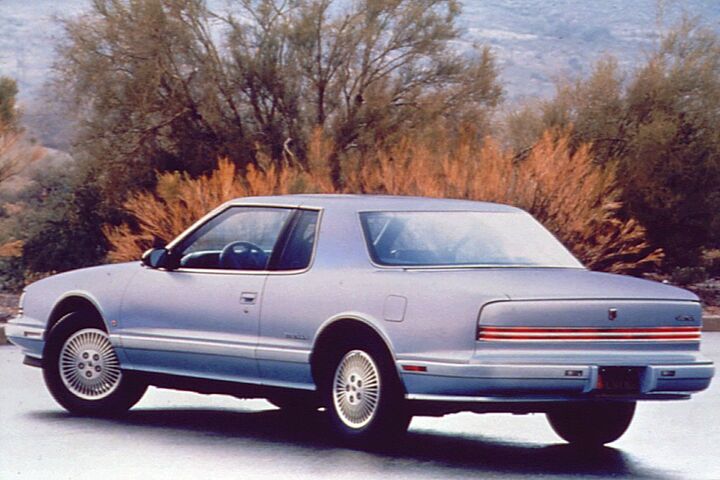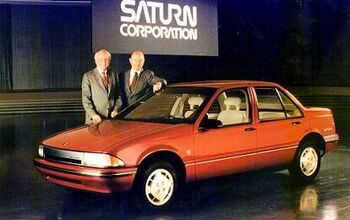Abandoned History: Oldsmobile's Guidestar Navigation System and Other Cartography (Part III)

We return to our spicy Oldsmobile content this week, with the introduction of GM’s first publicly tested in-car navigation system, TravTek. Arriving in the early Nineties, TravTek was launched more than two decades after GM’s magnet-based DAIR prototype failed to make production. This time The General was determined to make good on their big investment. Onward, to Orlando!
As detailed in the last installment, the new TravTek system was installed in 100 total 1992 Oldsmobile Toronados in Troféo trim. Of those, 75 would be rented through Avis via its Orlando International Airport location. The remaining 25 were leased to local drivers who spent lots of time cruising the greater Orlando area. In addition to distribution through Avis, Florida’s DoT was part of the project, along with AAA.
The overall objective of the soft launch of TravTek in Orlando was to explore the feasibility of an Advanced Driver Information System (ADIS), and whether regular drivers would accept such technology in a car. A quaint consideration in 2023 certainly, in the era of the widescreen 4K dashboard. The DoT was interested to see if the system would increase safety and use of the highways, as well as its potential to reduce travel time via traffic information, which would lead to lower fuel consumption.
General Motors maintained responsibility for the base system in the Toronados that provided the guidance and travel information. The Federal Highway Administration worked in conjunction with the Florida DoT and the city of Orlando to establish a new Traffic Management Center (TMC) in Orlando. The TMC gathered information on local traffic conditions from various government sources, as well as the Toronados themselves. Aggregated, the traffic information was then eventually passed back to TravTek to help users avoid congestion while driving.
The final piece of support came from AAA, which launched the TravTek Information and Services Center, or TISC. The TISC was the hub for the daily operations of TravTek. The office assisted users and provided Orlando-specific information at the request of TravTek users. The aforementioned data from government sources also passed through AAA’s hands before being sent back to TravTek.
Information was sourced from highway cameras, traffic signals, construction reports, and emergency vehicles in the area. This formed one of the key features of TravTek, way ahead of its time: Live traffic information and route revision. All information was displayed on the central 6-inch touchscreen in the Toronado.
Routes were displayed via a purple line across the map that was constant and showed the start and end points of the guidance. The Toronado was represented by a white arrow, which moved along the purple line as the route continued. Also provided were distance to destination details and time estimates.
Joining the car on the route map were small red stars that indicated accidents. Heavy, stopped traffic appeared via a yellow circle. And a similar-looking red circle meant a road was closed. Should a wrong turn be made, there was no automatic rerouting on the fly. A driver could choose between two fixes. The first was a New Route button that would set up a new starting point from the car’s current location, and reroute from there.
Since it was a brand-new technology, AAA felt that more drivers might choose to call for help. The Help button on the map screen made an immediate phone call to the TISC. A live representative from AAA would use their computer to help get the user back on the requested route or start a revised route.
Estimates were not that precise, however, as the United States had a considerable technical wall between the GPS information available to the military and that available to civilians. The GPS would provide the general area of the TravTek-equipped Oldsmobile, and the exact location of each car was narrowed down from there via an onboard compass and wheel sensors that detected speed. The route was also displayed in turn-by-turn graphics as travel continued.
Guidance was always supplemented with very synthesized voice directions that informed the driver of upcoming turns. Points of interest were available in TravTek courtesy of the coordination with AAA. Hotels, restaurants, and other points of interest were included with relevant names and addresses. Further details like AAA’s rating of each place were displayed on screen, as well as information about hotel amenities like a pool, or if it allowed pets.
The information available went much deeper than one might expect from a navigation system of that time period, as there was a “Things to See & Do” category within a Services/Attractions menu. From there, a particular month could be selected, and a list of events like plays, concerts, and other shows would be displayed. Information is detailed enough to include exact dates and times as well as ticket pricing.
Once a point of interest was selected, a driver could then place a call to the business or place in question via the screen! A very unexpected feature at the time, the driver would then need to pick up the console-mounted car phone to continue the call. Such a call might have been necessary on many occasions, as TravTek did not allow the user to type in a particular address.
Rather there was a list of streets within a 1,200 square mile boundary of Orlando. The TravTek would deliver the Toronado to the right street, but to find the particular address a driver was on their own. For the privilege of renting a luxurious $27,895 ($62,170 adj.) 1992 Toronado Troféo, AAA members who visited the Avis counter in Orlando paid $29 ($64 adj.) per day, or $139 ($309 adj.) on a weekly basis.
Per this 1991 Avis ad (hard to find), the pricing for the Toronado was not outlandish as a Geo Metro was up to $119 ($272 adj.) a week in that year. But if pricing wasn’t the barrier, what was? It seemed to fall into two categories: data limitations, and the government. We’ll pick up there in Part IV.
[Images: GM, YouTube]
Become a TTAC insider. Get the latest news, features, TTAC takes, and everything else that gets to the truth about cars first by subscribing to our newsletter.

Interested in lots of cars and their various historical contexts. Started writing articles for TTAC in late 2016, when my first posts were QOTDs. From there I started a few new series like Rare Rides, Buy/Drive/Burn, Abandoned History, and most recently Rare Rides Icons. Operating from a home base in Cincinnati, Ohio, a relative auto journalist dead zone. Many of my articles are prompted by something I'll see on social media that sparks my interest and causes me to research. Finding articles and information from the early days of the internet and beyond that covers the little details lost to time: trim packages, color and wheel choices, interior fabrics. Beyond those, I'm fascinated by automotive industry experiments, both failures and successes. Lately I've taken an interest in AI, and generating "what if" type images for car models long dead. Reincarnating a modern Toyota Paseo, Lincoln Mark IX, or Isuzu Trooper through a text prompt is fun. Fun to post them on Twitter too, and watch people overreact. To that end, the social media I use most is Twitter, @CoreyLewis86. I also contribute pieces for Forbes Wheels and Forbes Home.
More by Corey Lewis
Latest Car Reviews
Read moreLatest Product Reviews
Read moreRecent Comments
- Kjhkjlhkjhkljh kljhjkhjklhkjh its not even 2026 yet ... recall
- Mnemic Muscle cars are the only CARS still selling. Look up top 10 coupe sales from 5-6 years ago. Damn corvettes were outselling 2 door honda civics. Mustang, Challenger and Camaro were top 3 and by a huge margin, nothing else came close. With Charger being so huge there is room for Dodge to make a smaller coupe
- D i wonder if the geniuses who thought building an aluminum body truck still think it’s a great idea.
- D Meanwhile I am so glad my wife chose our loaded 2008 Solara Convertible, an excellent vehicle in every way, over the 2008 VW Eos. Parts are available from Toyota and third party suppliers. The top even too. It just keeps running and running well.
- Bd2.0 The last thing I could see myself doing is listening to a podcast from some smelly naked old men talking about cars.









































Comments
Join the conversation
"on the route map were small red stars that indicated accidents. Heavy, stopped traffic appeared via a yellow circle". On I-4 in Orlando, you'd need a LOT bigger screen to show all the accidents and stopped traffic. This was supplanted several years later by Hertz "NeverLost" GPS system they charged like $6/day extra for. The forerunner of the Garmin and TomTom units that littered dashboards in the early 2000s.
Funny, I drove by the old EDS corporate campus in Plano TX a few weeks ago. The place looks like a Government installation combining Military and Corrections facilities into one huge fenced campus. Ross Perot took GM's money and cackled all the way to the bank.